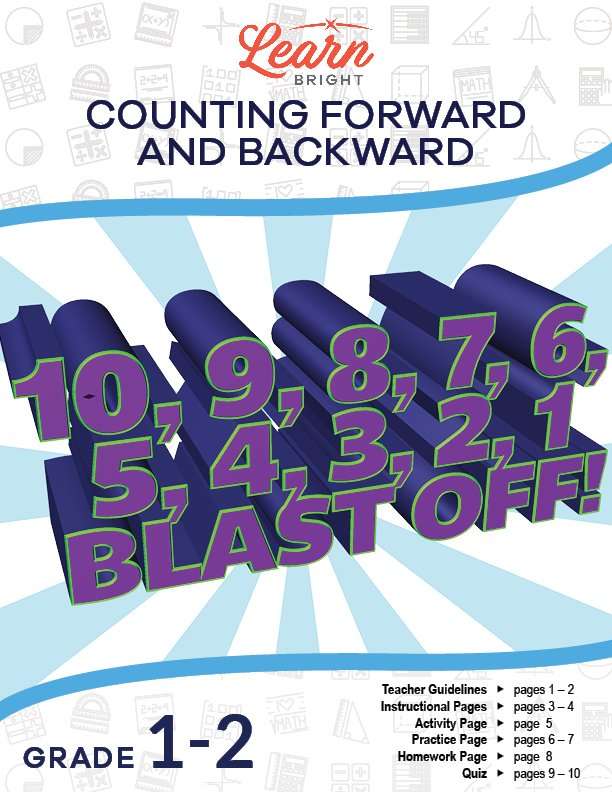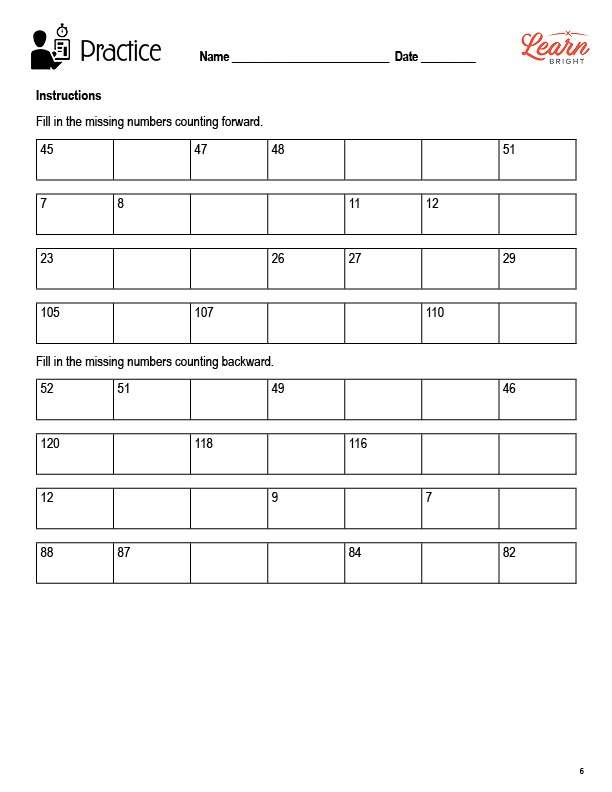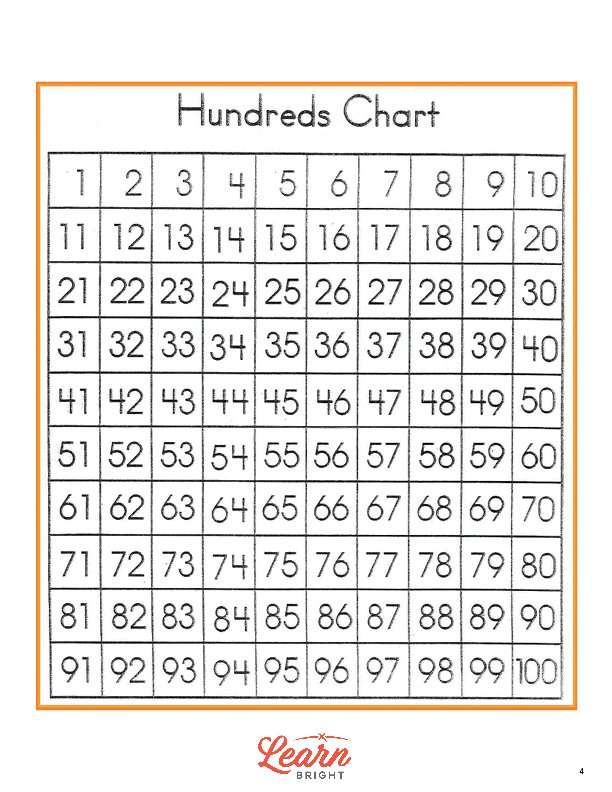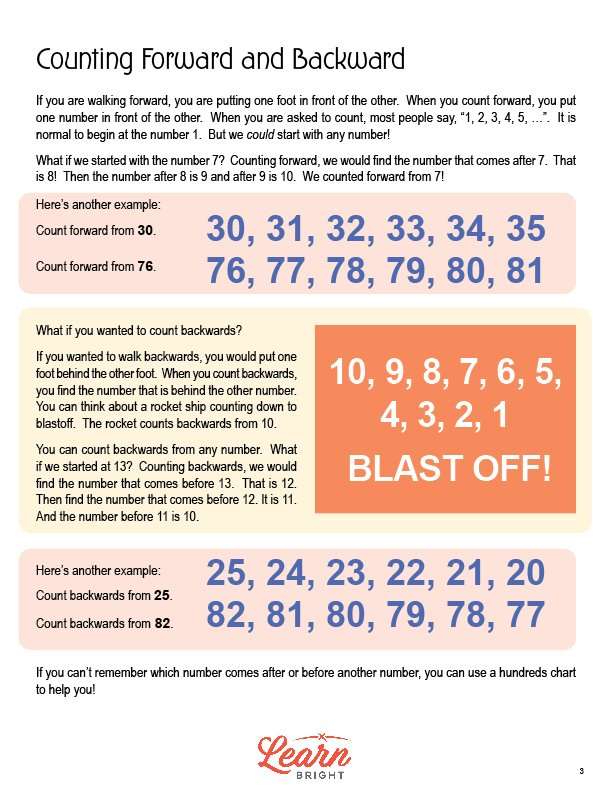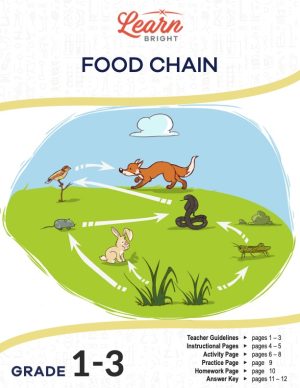Description
What our Counting Forward and Backward lesson plan includes
Lesson Objectives and Overview: Counting Forward and Backward introduces young students to counting forwards and backwards for the first time. The lesson includes a hundreds chart which students may use as a reference to help determine which number comes next as they attempt to count forwards or backwards starting at a number other than one. At the end of the lesson, students will be able to count forward and backward within the range of 120. This lesson is for students in 1st grade and 2nd grade.
Classroom Procedure
Every lesson plan provides you with a classroom procedure page that outlines a step-by-step guide to follow. You do not have to follow the guide exactly. The guide helps you organize the lesson and details when to hand out worksheets. It also lists information in the blue box that you might find useful. You will find the lesson objectives, state standards, and number of class sessions the lesson should take to complete in this area. In addition, it describes the supplies you will need as well as what and how you need to prepare beforehand.
Options for Lesson
Included with this lesson is an “Options for Lesson” section that lists a number of suggestions for activities to add to the lesson or substitutions for the ones already in the lesson. One optional addition to this lesson is to have your students create hopscotches from different starting numbers for others to play on. If you have more advanced students, you can begin to discuss the concept of addition and subtraction with them. You can also reinforce skip counting using the number line. Finally, with more advanced students, you can have them skip count forward and backwards.
Teacher Notes
The teacher notes page includes lines that you can use to add your own notes as you’re preparing for this lesson.
COUNTING FORWARD AND BACKWARD LESSON PLAN CONTENT PAGES
Counting Forward and Backward
The Counting Forward and Backward lesson plan includes two pages of content, the second of which is a hundreds chart. To walk forward, you put one foot in front of the other. To count forward, you put one number in front of the other. Most people start counting at 1, but you can start counting at any number you want! For example, if you start counting at 7, you would count 7, 8, 9, 10, and so on. If you start at 30, you would count 30, 31, 32, 33, 34, and so on.
You can also count backwards. To walk backwards, you put one foot behind the other. To count backwards, you find the number behind the previous number. When you count down from 10, you are counting backwards! Like counting forwards, you can count backwards starting with any number. For example, if you want to count backwards from 13, you would count 13, 12, 11, 10, and so on. To count backwards from 25, you would count 25, 24, 23, 22, and so on.
If you have trouble figuring out which number is next when counting forward or backward, you can always look at a hundreds chart!
COUNTING FORWARD AND BACKWARD LESSON PLAN WORKSHEETS
The Counting Forward and Backward lesson plan includes three worksheets: an activity worksheet, a practice worksheet, and a homework assignment. You can refer to the guide on the classroom procedure page to determine when to hand out each worksheet.
DRAWING NUMBER LINES ACTIVITY WORKSHEET
For the activity worksheet, students will work outside with chalk or inside with a large piece of paper and a marker. The teacher will choose a number and have the students draw a number line five numbers forward and five numbers backward. They will repeat this with different numbers. Students can count 10 forward and back if they are more advanced.
COUNTING FORWARD AND BACKWARD PRACTICE WORKSHEET
The practice worksheet asks students to find the missing numbers in a series by counting forward. They will also find the missing numbers in a series by counting backward.
COUNTING BY FIVES HOMEWORK ASSIGNMENT
For the homework assignment, students will count five numbers forward and five numbers backward from each of the given numbers.
QUIZ
This lesson also includes a quiz that you can use to test students’ understanding of the lesson material. For the quiz, students will fill in the missing numbers in a series counting forward, and the missing numbers in another series counting backward.
Worksheet Answer Keys
This lesson plan includes answer keys for the practice worksheet and the quiz. If you choose to administer the lesson pages to your students via PDF, you will need to save a new file that omits these pages. Otherwise, you can simply print out the applicable pages and keep these as reference for yourself when grading assignments.

